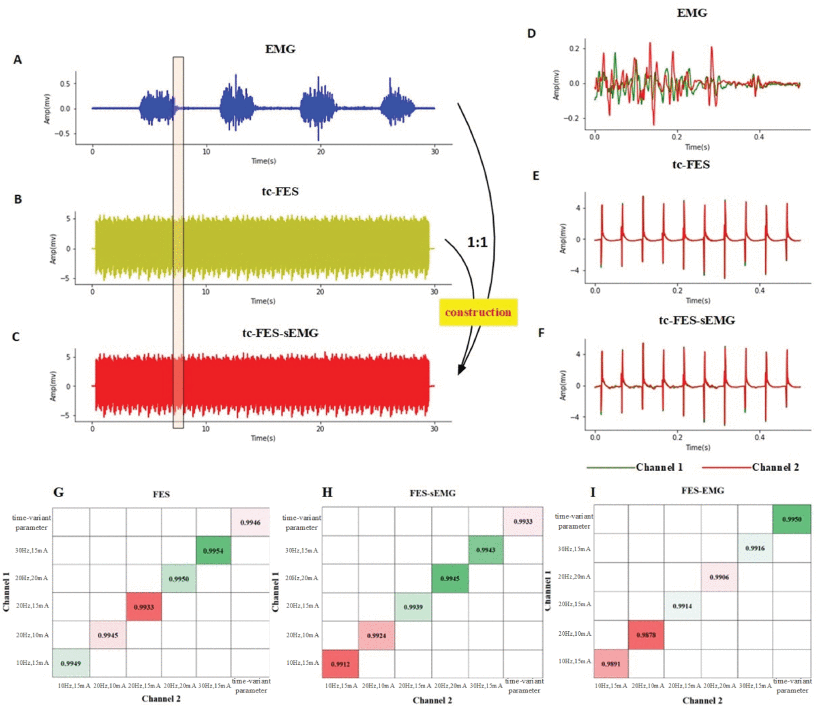


Xiaoling Chen, Yuntao Jiao, Dong Zhang, Ying Wang, Xinyu Wang, Yuqi Zang, Zhenhu Liang, Ping Xie
Removing the stimulation artifacts evoked by the functional electrical stimulation (FES) in electromyogram (EMG) signals is a challenge. Previous researches on stimulation artifact removal have focused on FES modulation with time-constant parameters, which has limitations when there are time-variant parameters. Therefore, considering the synchronism of muscle activation induced by FES and the asynchronism of muscle activation induced by proprioceptive nerves, we proposed a novel adaptive spatial filtering method called G-S-G. It entails fusing the Gram-Schmidt orthogonalization (G-S) and Grubbs criterion (G) algorithms to remove the FES-evoked stimulation artifacts in multi-channel EMG signals. To verify this method, we constructed a series of simulation data by fusing the FES signal with time-variant parameters and the voluntary EMG (vEMG) signal, and applied the G-S-G method to remove any FES artifacts from the simulation data. After that, we calculated the root mean square (RMS) value for both preprocessed simulation data and the vEMG data, and then compared them. The simulation results showed that the G-S-G method was robust and effective at removing FES artifacts in simulated EMG signals, and the correlation coefficient between the preprocessed EMG data and the recorded vEMG data yielded a good performance, up to 0.87. Furthermore, we applied the proposed method to the experimental EMG data with FES-evoked stimulation artifact, and also achieved good performance with both the time-constant and time-variant parameters. This study provides a new and accessible approach to resolving the problem of removing FES-evoked stimulation artifacts.
消除肌电图(EMG)信号中由功能性电刺激(FES)引起的刺激伪影是一项挑战。以往有关消除刺激伪影的研究主要集中在具有时间恒定参数的 FES 调制上,当存在时间变化参数时,这种方法就会受到限制。因此,考虑到 FES 引起的肌肉激活的同步性和本体感觉神经引起的肌肉激活的非同步性,我们提出了一种名为 G-S-G 的新型自适应空间滤波方法。它需要融合格拉姆-施密特正交化(G-S)和格拉布斯准则(G)算法,以去除多通道肌电信号中由 FES 引起的刺激伪影。为了验证这种方法,我们通过融合具有时变参数的 FES 信号和自主肌电图(vEMG)信号,构建了一系列模拟数据,并应用 G-S-G 方法去除模拟数据中的任何 FES 伪影。然后,我们计算了预处理后的模拟数据和自主肌电图数据的均方根值,并对两者进行了比较。模拟结果表明,G-S-G 方法在去除模拟肌电信号中的 FES 伪影方面非常稳健有效,而且预处理后的肌电信号数据与记录的 vEMG 数据之间的相关系数高达 0.87,表现良好。此外,我们还将所提出的方法应用于带有 FES 诱发刺激伪影的实验 EMG 数据,并在时间不变参数和时间变量参数方面都取得了良好的效果。这项研究为解决消除 FES 诱发刺激伪影的问题提供了一种新的、简便易行的方法。